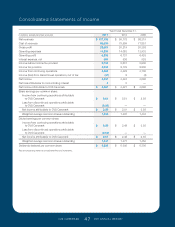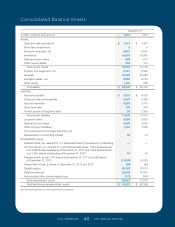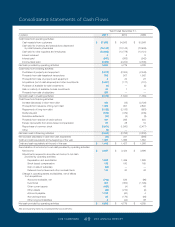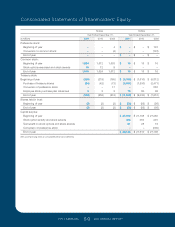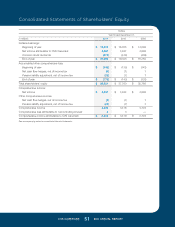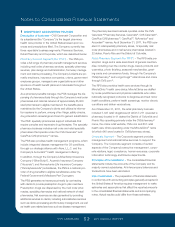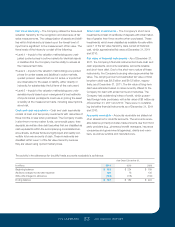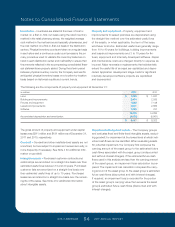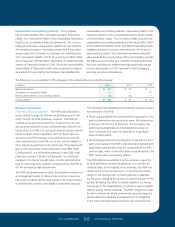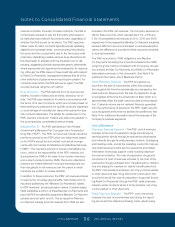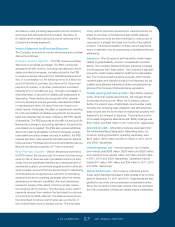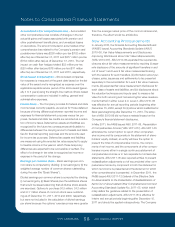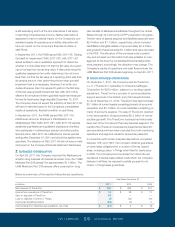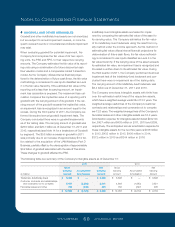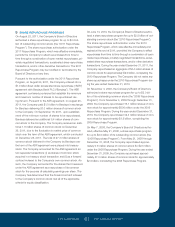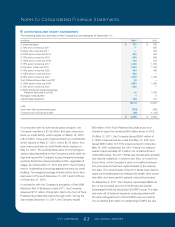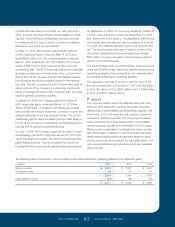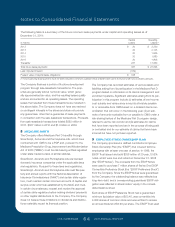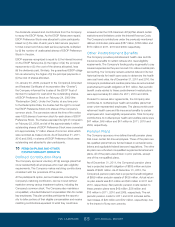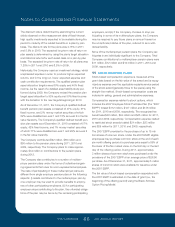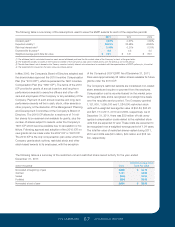CVS 2011 Annual Report Download - page 59
Download and view the complete annual report
Please find page 59 of the 2011 CVS annual report below. You can navigate through the pages in the report by either clicking on the pages listed below, or by using the keyword search tool below to find specific information within the annual report.
CVS CAREMARK 57 2011 ANNUAL REPORT
and delivery costs (including depreciation and amortization)
and actual and estimated inventory losses. See Note 14
for additional information about the cost of revenues of the
Company’s business segments.
Vendor Allowances and Purchase Discounts
The Company accounts for vendor allowances and purchase
discounts as follows:
Pharmacy Services Segment – The PSS receives purchase
discounts on products purchased. The PSS’ contractual
arrangements with vendors, including manufacturers, whole-
salers and retail pharmacies, normally provide for the PSS
to receive purchase discounts from established list prices in
one, or a combination of, the following forms: (i) a direct dis-
count at the time of purchase, (ii) a discount for the prompt
payment of invoices, or (iii) when products are purchased
indirectly from a manufacturer (e.g., through a wholesaler or
retail pharmacy), a discount (or rebate) paid subsequent to
dispensing. These rebates are recognized when prescrip-
tions are dispensed and are generally calculated and billed
to manufacturers within 30 days of the end of each com-
pleted quarter. Historically, the effect of adjustments resulting
from the reconciliation of rebates recognized to the amounts
billed and collected has not been material to the PSS’ results
of operations. The PSS accounts for the effect of any such dif-
ferences as a change in accounting estimate in the period the
reconciliation is completed. The PSS also receives additional
discounts under its wholesaler contract if it exceeds contrac-
tually defined annual purchase volumes. In addition, the PSS
receives fees from pharmaceutical manufacturers for adminis-
trative services. Purchase discounts and administrative service
fees are recorded as a reduction of “Cost of revenues”.
Retail Pharmacy Segment – Vendor allowances received by
the RPS reduce the carrying cost of inventory and are recog-
nized in cost of revenues when the related inventory is sold,
unless they are specifically identified as a reimbursement of
incremental costs for promotional programs and/or other ser-
vices provided. Amounts that are directly linked to advertising
commitments are recognized as a reduction of advertising
expense (included in operating expenses) when the related
advertising commitment is satisfied. Any such allowances
received in excess of the actual cost incurred also reduce
the carrying cost of inventory. The total value of any upfront
payments received from vendors that are linked to purchase
commitments is initially deferred. The deferred amounts are
then amortized to reduce cost of revenues over the life of
the contract based upon purchase volume. The total value
of any upfront payments received from vendors that are not
linked to purchase commitments is also initially deferred.
The deferred amounts are then amortized to reduce cost of
revenues on a straight-line basis over the life of the related
contract. The total amortization of these upfront payments
was not material to the accompanying consolidated financial
statements.
Insurance – The Company is self-insured for certain losses
related to general liability, workers’ compensation and auto
liability. The Company obtains third party insurance coverage
to limit exposure from these claims. The Company is also self-
insured for certain losses related to health and medical liabili-
ties. The Company’s self-insurance accruals, which include
reported claims and claims incurred but not reported, are cal-
culated using standard insurance industry actuarial assump-
tions and the Company’s historical claims experience.
Facility opening and closing costs – New facility opening
costs, other than capital expenditures, are charged directly
to expense when incurred. When the Company closes a
facility, the present value of estimated unrecoverable costs,
including the remaining lease obligation less estimated sub-
lease income and the book value of abandoned property and
equipment, are charged to expense. The long-term portion
of the lease obligations associated with facility closings was
$327 million and $368 million in 2011 and 2010, respectively.
Advertising costs – Advertising costs are expensed when
the related advertising takes place. Advertising costs, net
of vendor funding (included in operating expenses), were
$211 million, $234 million and $317 million in 2011, 2010
and 2009, respectively.
Interest expense, net – Interest expense, net of capital-
ized interest, was $588 million, $539 million and $530 million,
and interest income was $4 million, $3 million and $5 million
in 2011, 2010 and 2009, respectively. Capitalized interest
totaled $37 million, $47 million and $39 million in 2011, 2010
and 2009, respectively.
Shares held in trust – The Company maintains grantor
trusts, which held approximately 2 million shares of its common
stock at December 31, 2011 and 2010. These shares are des-
ignated for use under various employee compensation plans.
Since the Company holds these shares, they are excluded
from the computation of basic and diluted shares outstanding.
127087_Financial.indd 57 3/9/12 9:42 PM


